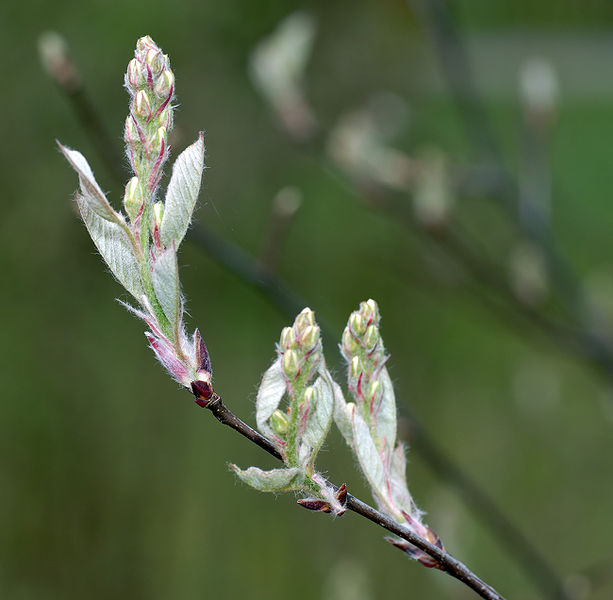General Description
Bloom Description: White, showy, 5 petaled flowers are approximately 3/4" across and open prior to full leaf emergence. Blooms in late March and early April.
Growth Habit & Shape: A stoloniferous shrub that rambles to form a shrubby thicket. This species stays low, typically about 3' tall, in contrast with the other species in the genus.
Soil Preferences: Tolerates a wide range of well-draining, rocky, acidic soils, from moist to dry.
Root Description: Shallow, broad, suckering rhizomatous root system; fibrous.
Garden Uses: Amelanchier spicata is a nice spreading shrub for the garden border, with beautiful bark, showy flowers early in spring, fleeting fruit in early summer, and bright fall color. It can be used to naturalize areas in the understory where shrubs are preferred, or to provide some erosion control along stream banks.
Best Management & Maintenance: This species needs little attention; it grows and blooms well without much pruning or care. This plant will spread from seed dispersed by birds, and has become invasive in some parts of Europe because of this. It is uncommon in the United States, however.
Common Problems:
Biotic: rust, leaf spot, powdery mildew. Insect problems such as sawfly, borer and leaf miner are occasionally found.
Benefits
Ornamental Value: Lots of values with the whole Amelanchier genus! The flowers are most distinctive because they bloom early with abundant white flowers. Unfortunately the fruit does not last long, overwhelmed by the attentions of birds, but the fruits are a beautiful rosy-purple while they last. Fall color is nice, but arrives early and drops quickly.
Wildlife Benefits: Juneberry attracst many birds, from insect-eaters in early spring when the flowers are in bloom, to fruit-eaters in early summer. It is the larval host of the striped hairstreak buterfly, and serves as a host plant over one hundred other species of butterflies and moths.
Other Practical/Environmental Benefits: erosion control, bank stabilization.
Use in place of: -
Ecology
Habitat:
Per the Flora of North America, typical habitats include "summits and cliffs of low mountains, open woods, woodland clearings, rocky soil, crevices, shores, fields, roadsides, peaty, sandy, or gravelly and, typically, acidic soil[…]"
Response to Disturbance: Amelanchier can tolerate changes in the immediate environment once established, and will thrive in a wide variety of soil and sun conditions; Amelanchier spicata in particular is adaptable to sunny, rocky conditions, and would establish well in newly denuded sites or in locations with poor soil. Though versatile in its site condition tolerances, all members of this genus are heavily attractive to insect herbivores, and may therefore have trouble establishing in places where few other native plants are available for these herbivores to eat.
Native State Distributions:
Canada: NB, NS, PE, QC
USA: CT, DC, DE, FL, GA, IA, LA, MA, MD, ME, NC, NH, NJ, NY, PA, RI, SC, TN, VA, VT, WV
Wetland indicator status: FACU
References
Return to Top

